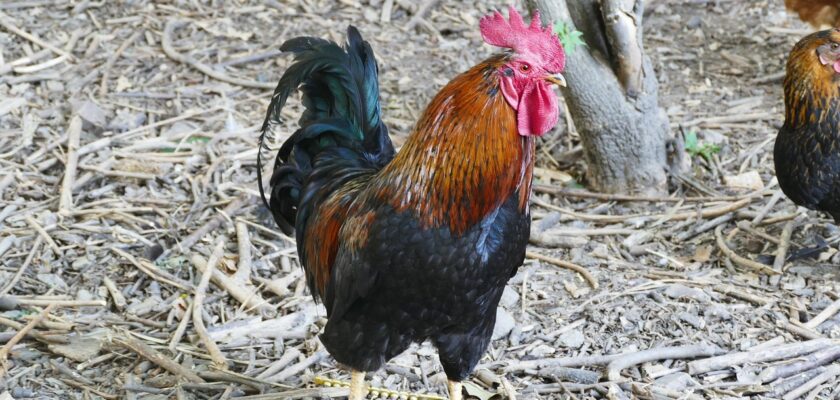Introduction: A Brief Look at the Chicken’s Timeless Legacy
Chickens have strutted their way through history for thousands of years, quietly becoming one of the most important animals to human civilization. But just how long have chickens been around? While most of us recognize chickens as everyday barnyard creatures, their origins trace back to ancient jungles, sacred temples, and royal courts across continents. This article dives deep into their remarkable journey, from wild birds to global agricultural staples, with insights backed by science, archaeology, and culture.
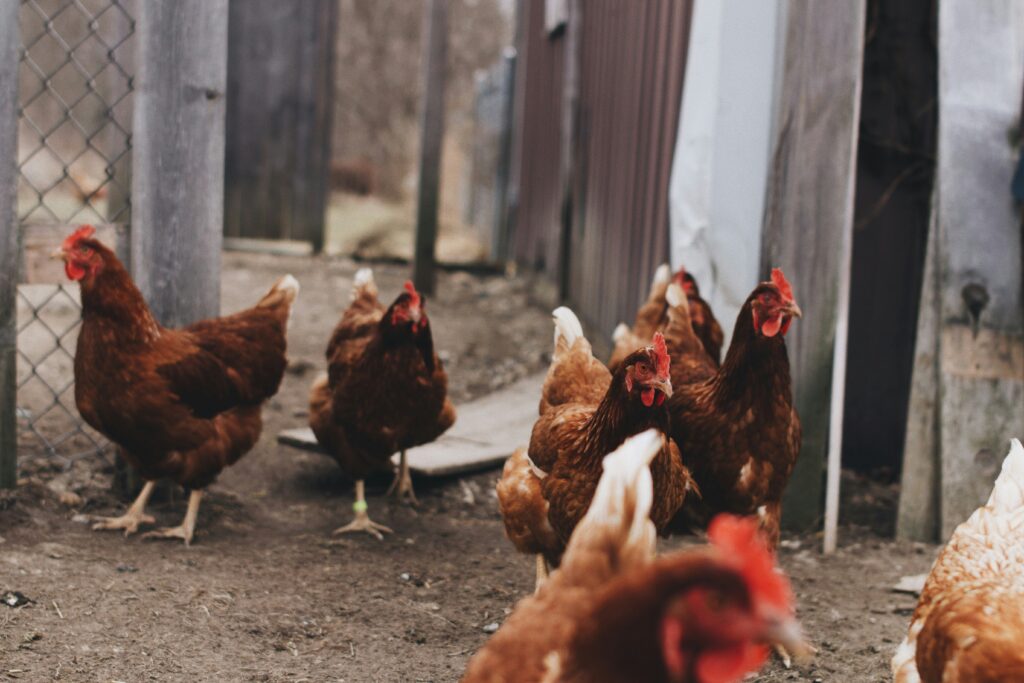
Photo by Bri Tucker on Unsplash
The Origins of Chickens: Tracing Their Ancestry
The Red Junglefowl Connection
Modern chickens (Gallus gallus domesticus) are descendants of the Red Junglefowl, a wild bird native to the dense tropical forests of Southeast Asia. Genetic analysis has confirmed this close relationship, revealing that chickens were domesticated between 8,000 and 10,000 years ago.
The Red Junglefowl still exists today and resembles the domestic chicken in appearance and behavior. It was their adaptability and social nature that made early domestication possible.
Early Domestication in Southeast Asia
Archaeological evidence suggests chickens were first domesticated in regions like modern-day Thailand, Vietnam, and India. Researchers discovered chicken bones dating back to 7,400 years ago in the Ban Non Wat excavation site in Thailand. These early chickens were smaller and used more for ritual purposes than for food.
Interestingly, early domestication wasn’t always about food production. In many cultures, chickens were valued for cockfighting, spiritual ceremonies, and even timekeeping—roosters crowing at dawn had cultural significance before clocks existed.
Chickens in Ancient Civilizations
Chickens in Ancient China
By 1600 BCE, chickens had made their way into Ancient China, primarily through trade routes from South Asia. The Chinese utilized chickens in agricultural societies, incorporated them into zodiac signs, and believed their crowing dispelled evil spirits.
Chickens in the Middle East and Egypt
Chickens were introduced into Mesopotamia and Egypt around 1400 BCE. Egyptian hieroglyphs depict chickens, and tombs contain chicken bones—showing their value as both food and symbolic creatures. Egyptians saw the rooster’s call as a sign of rebirth and sunrise.
Greek and Roman Views on Chickens
In Ancient Greece, chickens symbolized masculinity and courage. They were associated with Ares, the god of war. The Romans took things further by integrating chickens into military strategies. Roman augurs used “sacred chickens” to predict battle outcomes—if the birds ate greedily, it was seen as a good omen.
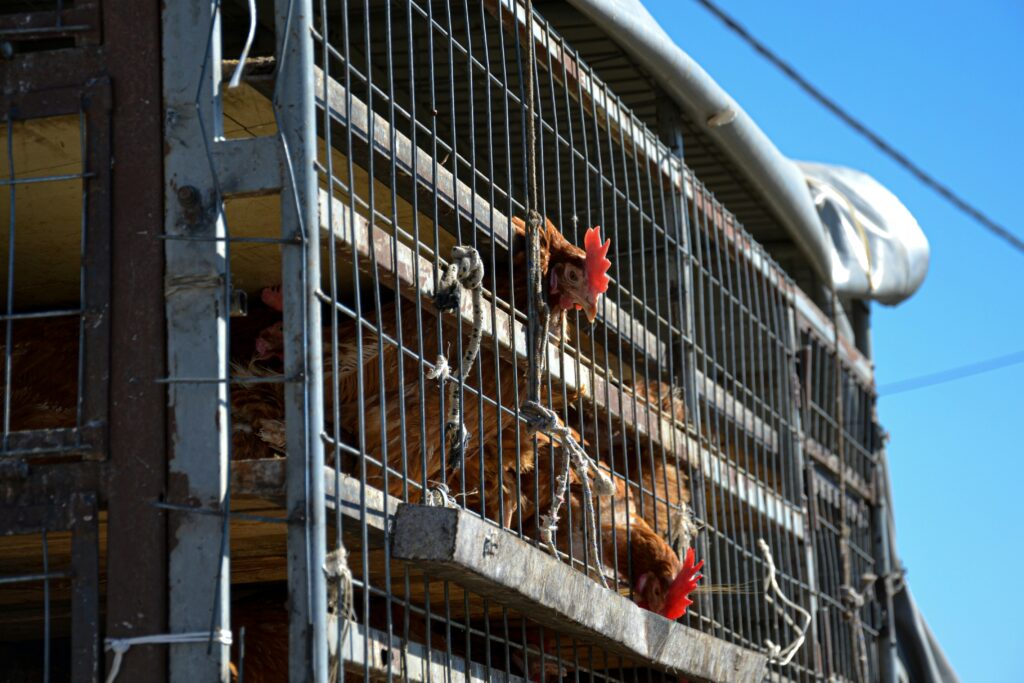
Photo by Danielle Suijkerbuijk on Unsplash
The Global Spread of Chickens
Via Trade Routes and Exploration
With the rise of global trade and exploration, chickens spread quickly. They were carried along the Silk Road, across Africa, and throughout Europe. Their ability to adapt to various climates and provide consistent food made them ideal travel companions.
Arrival in the Americas
Chickens made their way to the Americas around the 16th century with European colonists. However, there is some evidence (based on DNA studies) suggesting that Polynesian seafarers may have introduced chickens to South America even earlier, around 1300 CE, predating Columbus.
Chickens in Medieval and Renaissance Europe
During the Middle Ages, chickens were common in European villages. They became staples of feasts and religious fasting. Monasteries often raised chickens for eggs and meat. By the Renaissance, selective breeding began to shape chickens into specialized breeds for meat or eggs—an early sign of the poultry industry we know today.
Scientific Evolution and Genetic Adaptation
Selective Breeding and Varieties
From the 19th century onward, humans began selectively breeding chickens for various traits—size, egg-laying frequency, feather patterns, and temperament. This led to the development of famous breeds like the Leghorn, Rhode Island Red, and Silkie.
DNA and Archaeological Discoveries
Recent genetic studies have helped date chicken domestication and trace migration patterns. Researchers have sequenced ancient chicken DNA, matching it with modern breeds. These studies confirm the long, intercontinental journey chickens took alongside humans.
One study from the University of Oxford revealed that early domesticated chickens initially laid eggs infrequently—every few weeks—unlike today’s commercial layers that produce over 300 eggs per year.
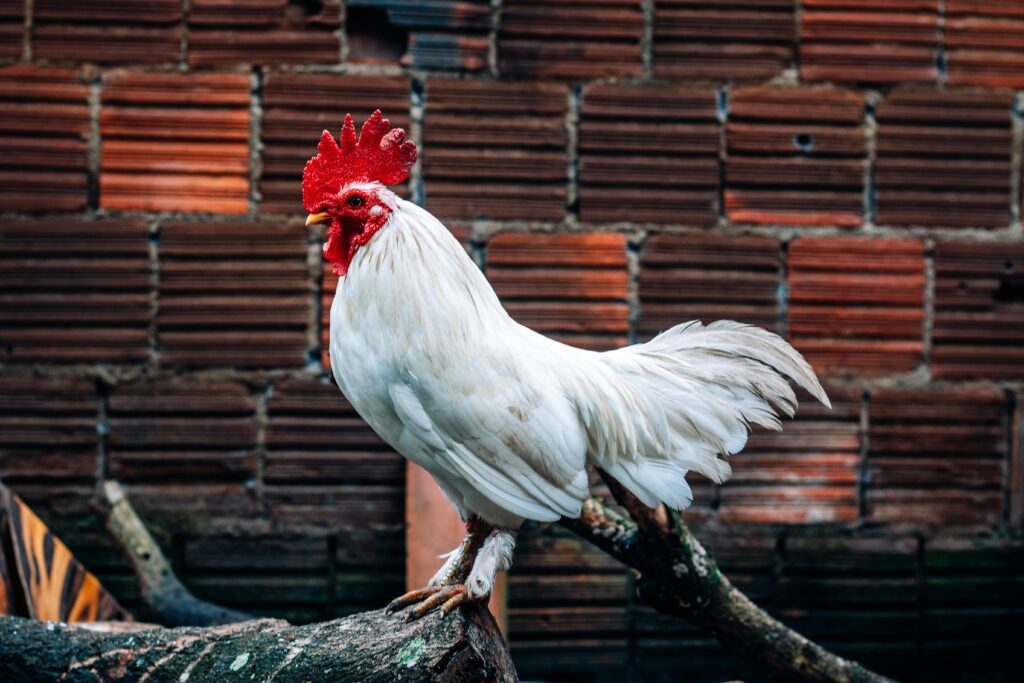
Photo by RAFAEL QUATY
Chickens in Religion and Symbolism
Chickens have long held spiritual and symbolic roles across various cultures:
- In Hinduism, the rooster is associated with Lord Murugan and is seen as a divine protector.
- In Christianity, the rooster symbolizes vigilance—famously linked to Peter’s denial of Jesus.
- In African and Caribbean traditions, chickens are often used in sacrificial rituals to honor deities or ancestors.
These roles reinforce how chickens are more than just food—they carry cultural weight.
Modern-Day Role of Chickens
From Backyard Coops to Factory Farms
Today, over 25 billion chickens populate the world, making them the most numerous bird species. Their journey from jungle fowl to industrial agriculture is staggering.
In rural settings, backyard chickens are making a comeback, especially among eco-conscious communities. Urban farming has brought chickens into cities, where residents raise them for fresh eggs and sustainability.
Meanwhile, large-scale poultry operations supply billions of eggs and meat worldwide. Ethical concerns around factory farming have also sparked movements for better treatment, free-range practices, and humane handling.
Chickens in Popular Culture
From Foghorn Leghorn cartoons to viral YouTube chickens, these birds have pecked their way into pop culture. Chickens symbolize humor, innocence, and sometimes wisdom. They appear in nursery rhymes, video games, and even as therapy animals.
FAQs: Answering the Most Asked Questions About Chicken History
1. How long have chickens been around?
Chickens have been domesticated for over 8,000 years, originating from the Red Junglefowl of Southeast Asia.
2. Where were chickens first domesticated?
Chickens were first domesticated in areas now part of Thailand, Vietnam, and India.
3. Did chickens exist during the time of dinosaurs?
While chickens didn’t exist back then, birds—including chickens—evolved from theropod dinosaurs like the Velociraptor.
4. Who brought chickens to the Americas?
Chickens were introduced to the Americas by European explorers in the 1500s, although some studies suggest earlier Polynesian contact.
5. What’s the oldest breed of chicken?
The Ayam Cemani, a rare Indonesian breed, and the Silkie from China are among the oldest recognized breeds.
6. Why do roosters crow in the morning?
Roosters crow due to their circadian rhythm, which is triggered by changes in light. It’s a way to establish territory and alert others.
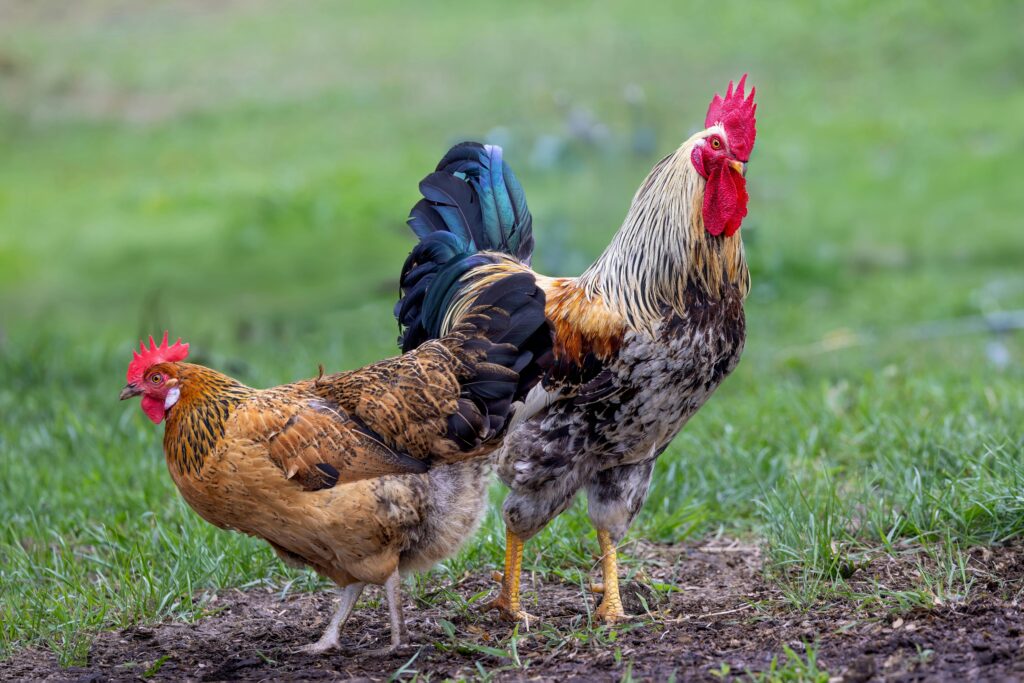
Photo by Mohan Nannapaneni
Conclusion: The Enduring Impact of Chickens Through Time
Chickens have not only survived through millennia—they’ve thrived. From jungle origins to global domination, their adaptability, usefulness, and cultural importance have made them a permanent fixture in human history. Whether you view them as a breakfast staple, sacred symbol, or quirky pet, one thing’s clear: chickens are here to stay.
